CT Coalition to Protect Bears Fact Sheet: Keeping People Safe and Bears Wild
Does a Bear [Live] in the Woods?
YES!
Black bears may live deep in the woods. They are naturally shy and wary of people, and serve a vital role in our forested ecosystems. Black bears can also adapt to living in the margins of our suburbanized landscape when it affords den sites and food sources.
Public education on black bear behavior and natural history can help people learn how to keep bears where they belong and make bears unwelcome in our neighborhoods. It’s our responsibility to persistently deter bears and keep bears off the Bear Behavioral Ladder of Progression.
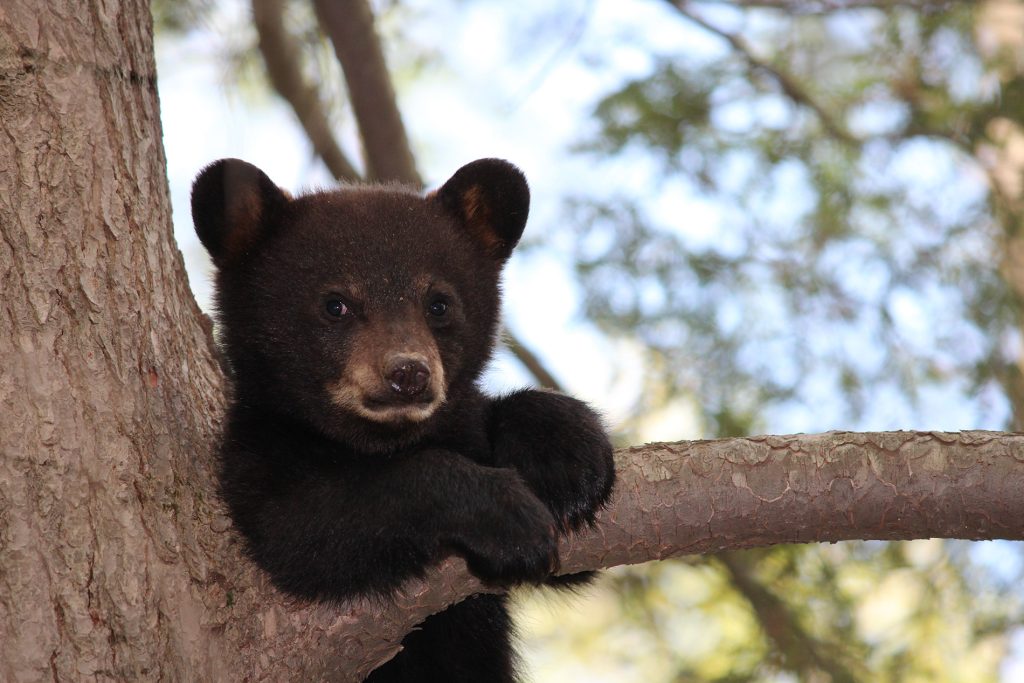
What are some beary-smart at-home solutions to prevent bear interactions if they do come into our neighborhood?
Removing food is essential.
It is also crucial to make bears uncomfortable and unwelcome.
- Make garbage inaccessible and do not put trash out until collection time. A bear-resistant container is a sure-fire way to defeat determined bears. Check with your trash hauler to see if they offer bear resistant containers – many do. Or consider purchasing one – they can range in size and typically start at $100. Check with your trash hauler to make sure your bear-resistant container is compatible with their equipment.
- Clean your grill, bring bird feeders in from March through November, and do not leave pet food outside.
- Protect food sources like chickens, small livestock, and beehives with electric fencing. Electric fencing is very effective if it is installed and maintained correctly and uses the correct standards. Experts recommend the following specs for deterring bears: 0.7 joules, a minimum of 6,000 volts, height of 4 feet or more, and 5 or more wires. Maintenance is key. It’s also recommended to bring small animals into a sturdy locked building at night.
- Make sure your vehicles don’t smell like food: Remove wrappers, open beverages, or anything that could smell intriguing. Keep windows rolled up and doors locked.
- Always make food-seeking bears unwelcome. If a bear is snooping around, make loud noises, honk the car horn, clap, yell – and continue until the bear leaves. No food plus consistent aversive conditioning will change habits and teach bears to avoid an area in the future.
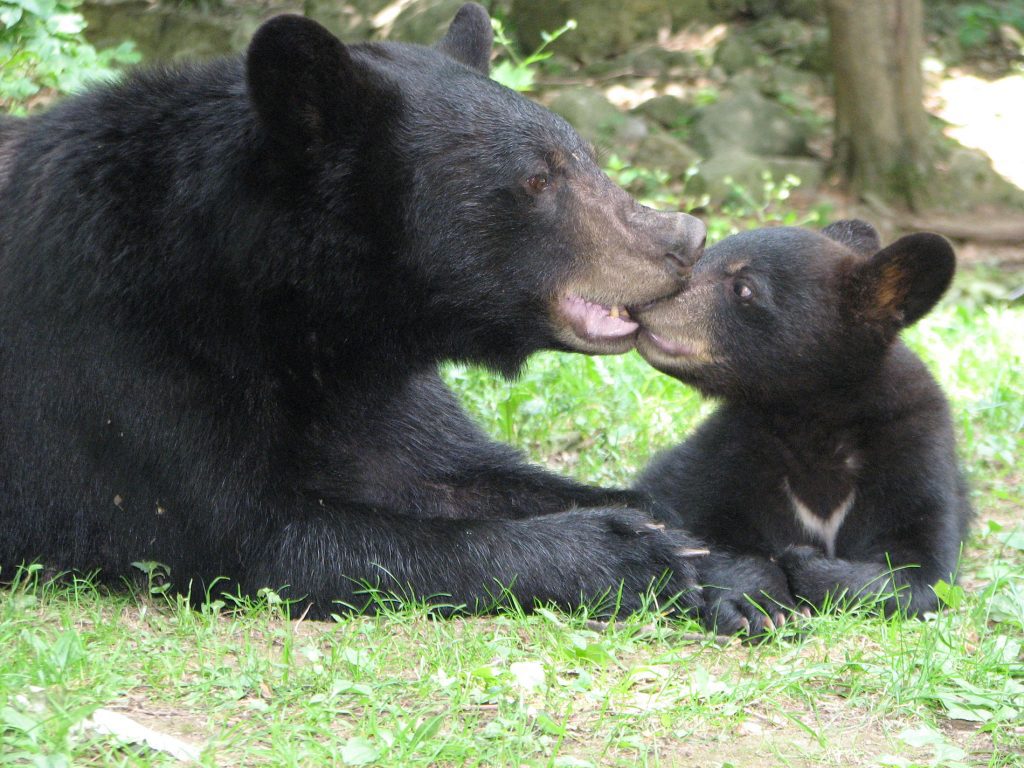
I’ve read bears have entered homes? Is that true?
Yes, and this has occurred in Connecticut. It is our responsibility to learn more and try to prevent it. Most black bears that entered homes were enticed by the scent of a current or prior food attractant. A lot of what we are seeing is driven by habituation and progressive comfort in our neighborhoods, which is why public education on bear behavior is critical. Preventing interactions depends on changing problematic human behavior.
It’s important to remember that bears have a great sense of smell. Screened-in porches and open windows won’t prevent bears from smelling what’s on the menu at your house. Don’t leave food like birdseed and food for pets on your deck or porch. Screens don’t always deter bears.
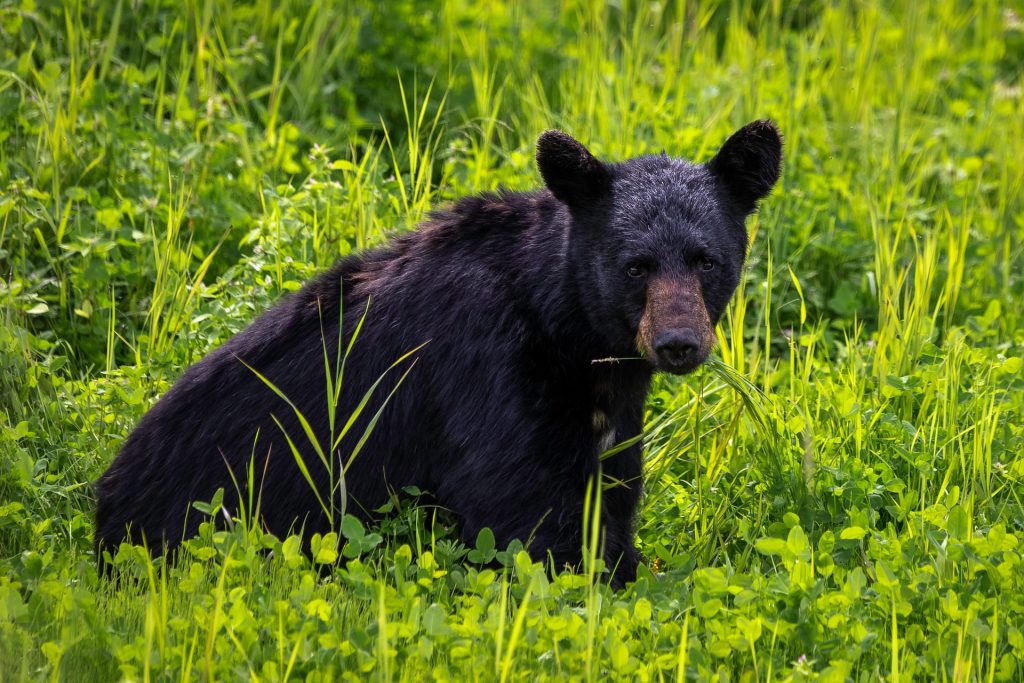
Is the bear population growing? Can the number of bear “sightings” be used to estimate the actual population?
We don’t know the current population. The number of black bears in Connecticut is small and they are slow to reproduce. Bears limit their cubs to between two and four per cycle and give birth no more than every two to three years. Bear population figures are often quoted from a UCONN study of the NW corner; that study was done 8 years ago.
Bear “sightings” may inflate people’s perceptions of the bear population. Often many people report seeing the same bear: 12 sightings does not mean 12 bears, but it is often interpreted that way. For example, Bobbi the Newtown bear (#217) was reported 191 times – but she was obviously only 1 bear!
Vehicle collisions have been a significant source of black bear mortality in CT. So please slow down while driving!
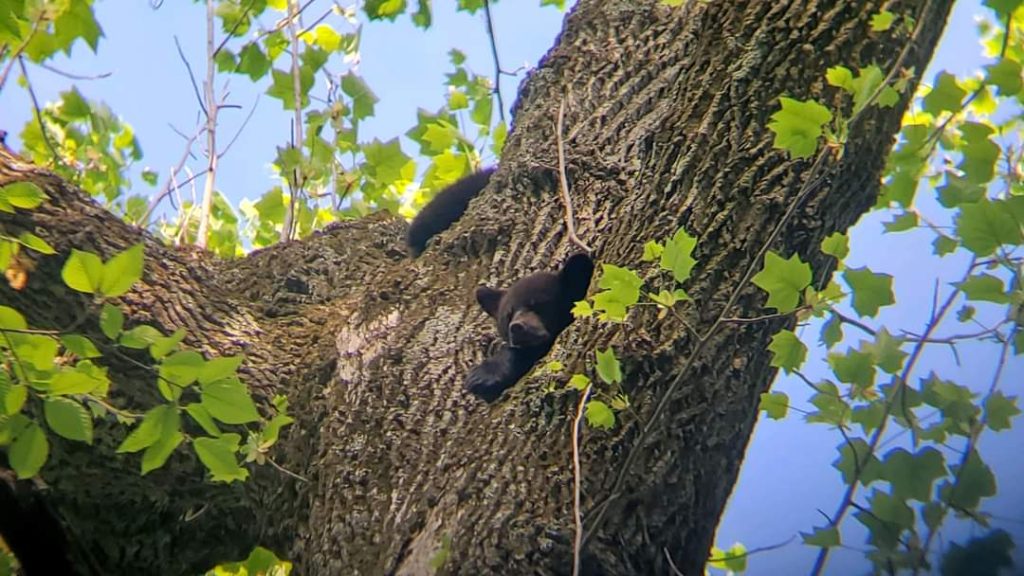
What does an ear tag mean?
An ear tag does not mean a bear has caused problems. Tagged bears are part of ongoing research to understand and track the black bear population in Connecticut. Read more here.
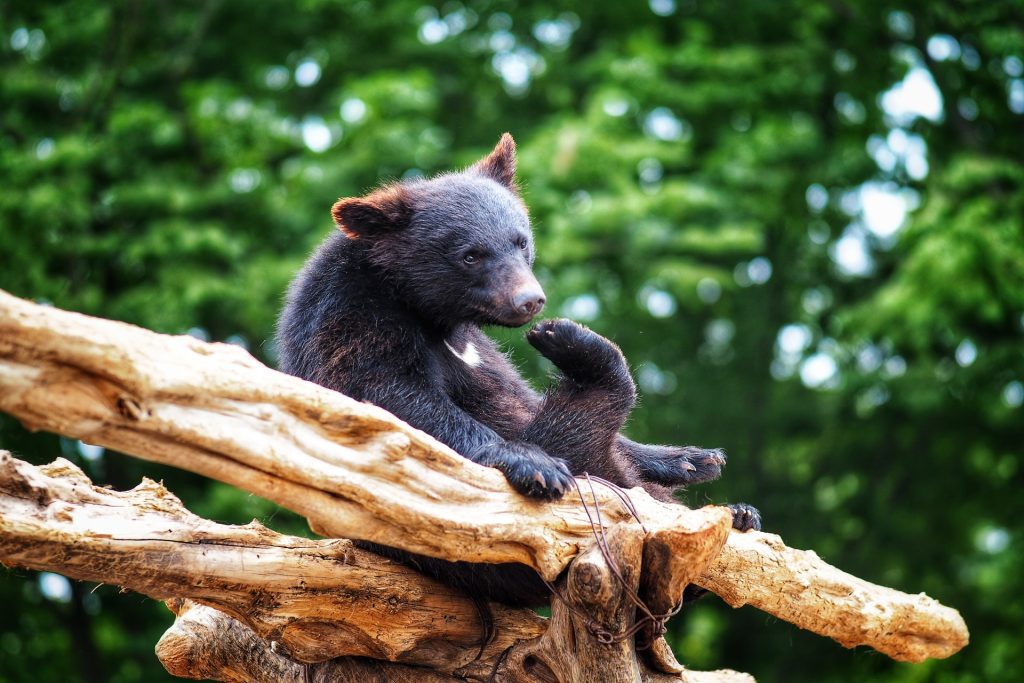
Can I enjoy birds without attracting bears?
YES! There are many beneficial ways to attract birds and not bears.
The best strategy is native plants that attract pollinators and birds. Native plants are the best food source for native species. Read more here: Homegrown National Park.
Install bird nesting boxes or install a birdbath – birds love splashing around in water. They also enjoy a good sand-bath so consider building a sand or dust box.
Remove bird feeders from March to November. Use Nyjer thistle seeds, which many birds like but bears don’t.
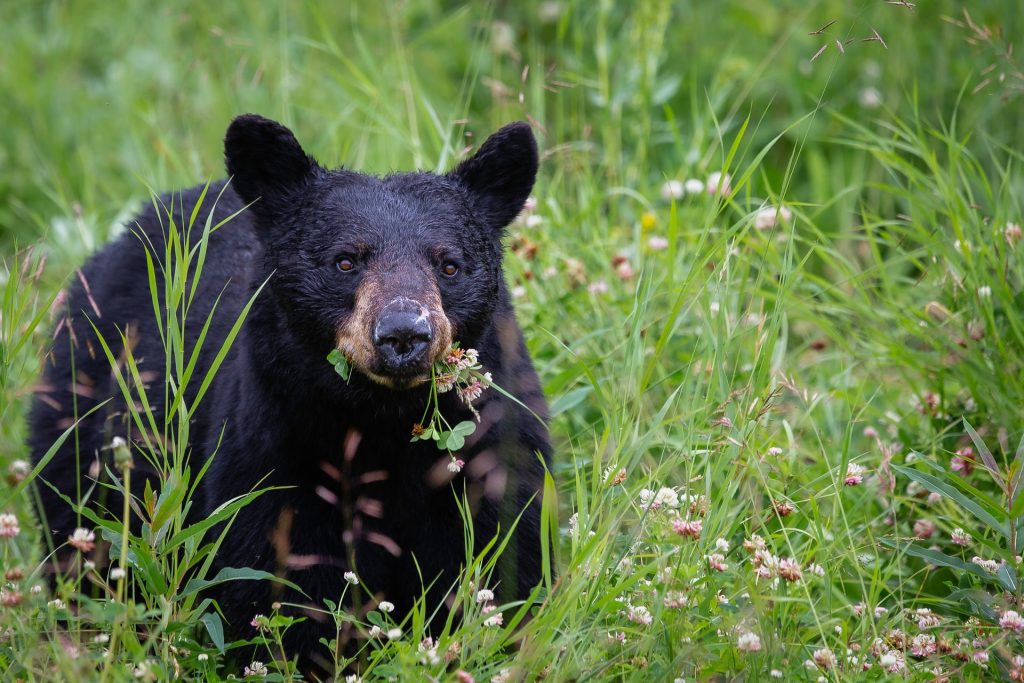
What precautions should I take in the woods if bears might be present?
Bears are shy and docile; they want to avoid close interactions with people. We have a responsibility when we are in their habitat, and interactions with bears in the woods have most often involved surprised bears and/or unleashed dogs.
If you make noise periodically (whistle, talk, sing, carry a small rattle, etc.), a bear will simply avoid you. Always keep dog(s) leashed and under control, thereby protecting all wildlife.
If you see a bear while hiking, always give them a wide berth. Either turn around and go back or detour around them. If a bear is close by, directly in your sight, and communicating that they want you to leave by snorting, swatting, or false charging (called a “bluff”), face them and make yourself tall and large. Don’t run, and back away slowly. If the bear continues to approach (an unlikely scenario) and you feel threatened, yell and/or spray bear spray just above the head (as long as you are not downwind).
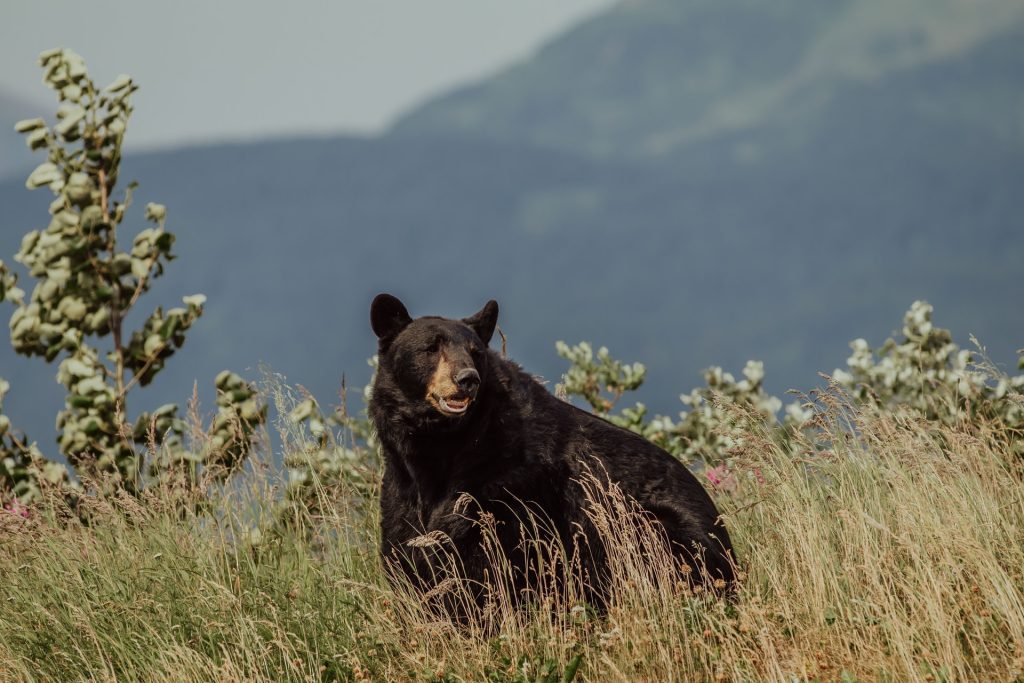
Why is hunting NOT the answer?
The science is clear: hunting does not reduce complaints or incidents with bears. It does not teach bears to avoid neighborhoods, and bears killed by hunters in rural areas are not likely to be bears that are visiting backyards. Further, a large study found that Connecticut residents want to peacefully coexist with the state’s wildlife. We need to align our policies with science, public values and lasting low cost solutions.
We know that food attractants are the number one cause of bear interactions. A strong education program to reinforce effective, non-lethal methods of keeping bears away is the best way to manage bears in Connecticut.
Hunting is simply the wrong tool for the job. Like using any wrong tool, it is ineffective and can make the problem worse. Hunting also leaves behind orphaned cubs. Depending on their age, orphaned cubs are unable or unlikely to survive since their mother won’t be teaching them survival skills or protecting them from predators.

Can I really make a difference and protect black bears in CT?
YES.
Together, we can keep bears wild and people safe. Other regions in the country have higher bear populations and fewer problems. Residents like you can help promote community-based, lasting solutions and peaceful coexistence.
Irresponsible or uninformed human behavior can be deadly for black bears—three “nuisance bears” were killed in Connecticut in 2020 for entering homes. Four others were killed for “problematic behavior.” High-profile black bear-killings in 2022 resulted in four orphaned and one dead bear cub. In recent years, off-leash dogs who frightened bears resulted in tragic and unnecessary killings.
It’s important to recognize that there are signs of change in Connecticut that represent good news for people and bears. The towns of Simsbury and Granby have adopted their own wildlife feeding ordinances. In Litchfield County, Warren’s First Selectman encouraged residents to use bear-resistant trash containers. USA Waste & Recycling offers 95-gallon cans that can be rented for $10 a month. Bearicuda Bins, located right in Litchfield, now offers fully automated cans that can be used by fully automated haulers. Check with your trash hauler for options.
We welcome your help with public education and positive legislative advocacy to make CT proactive and bear-smart.

